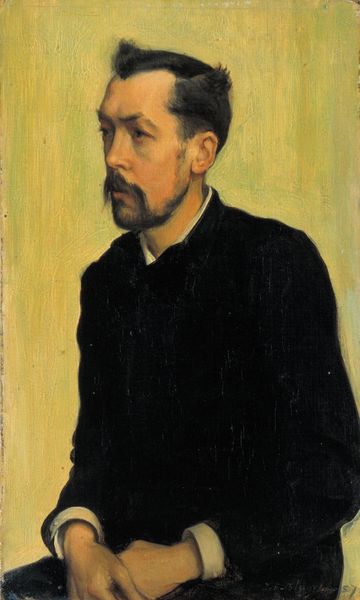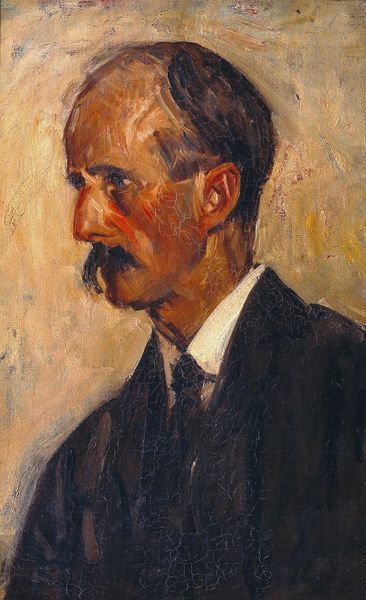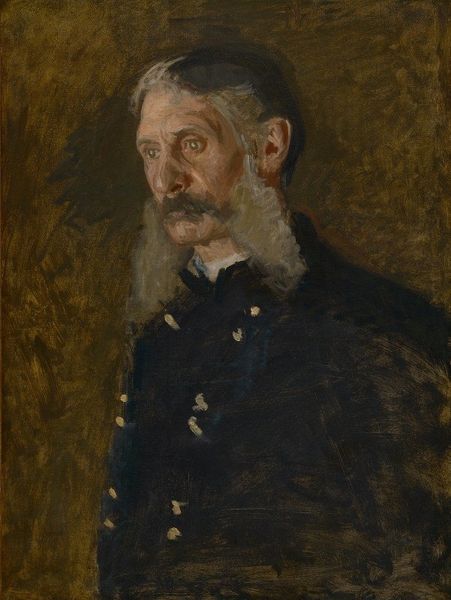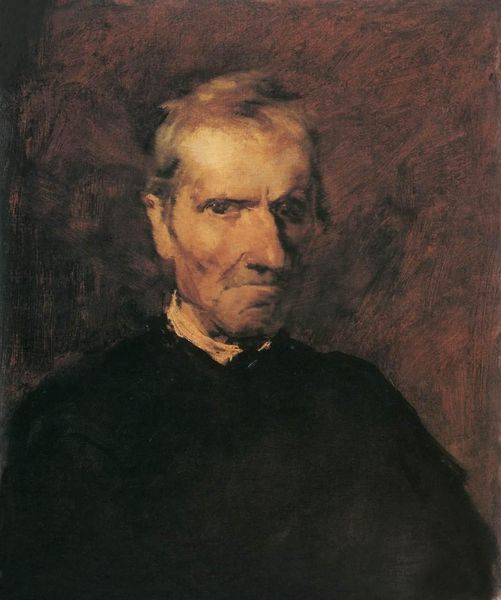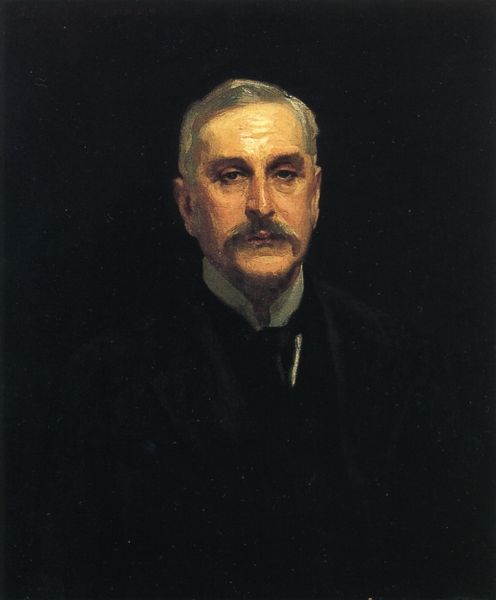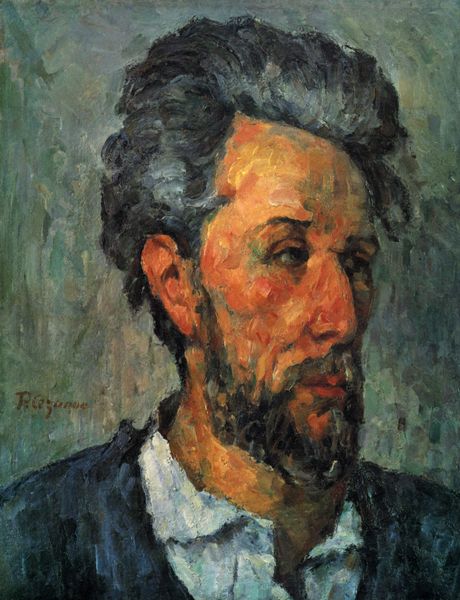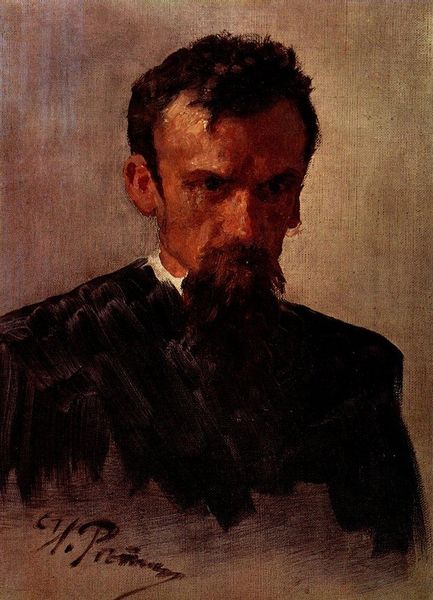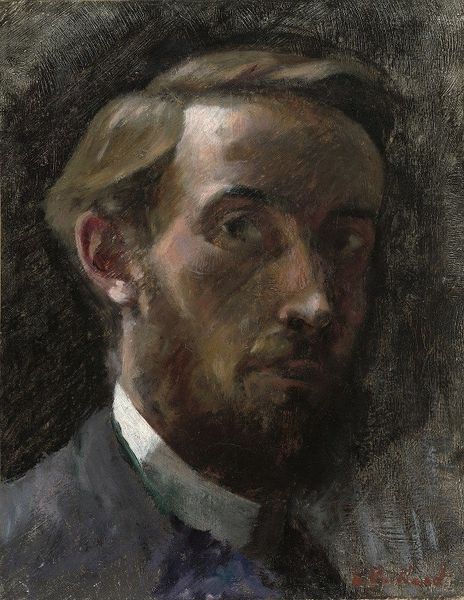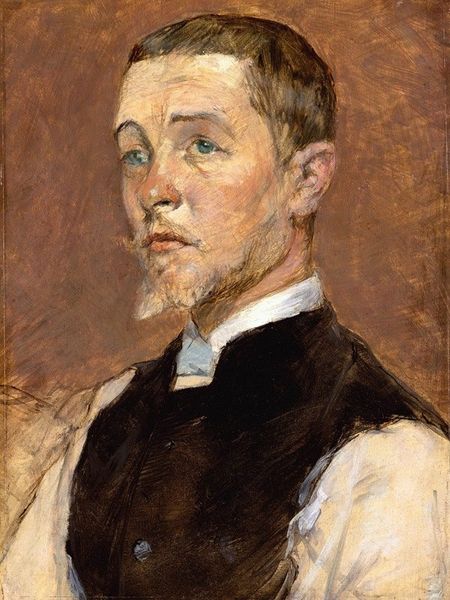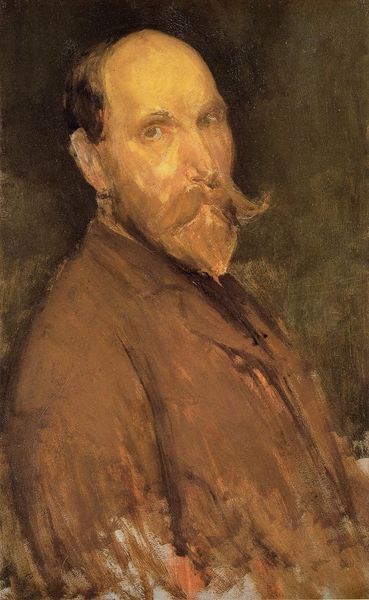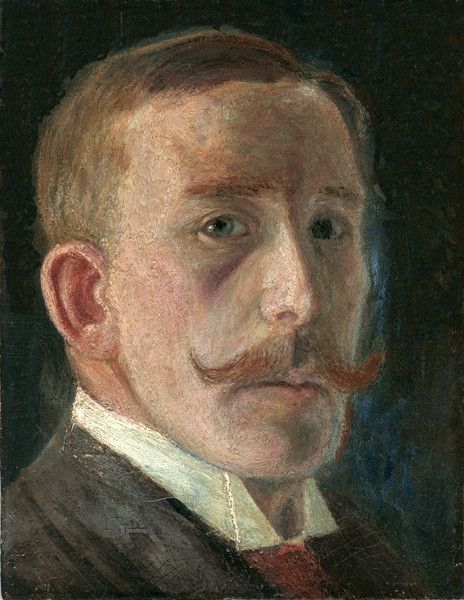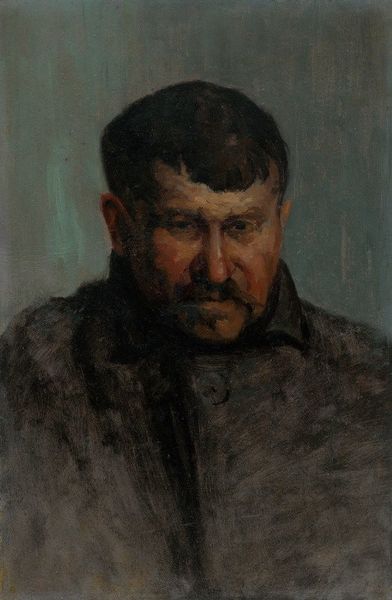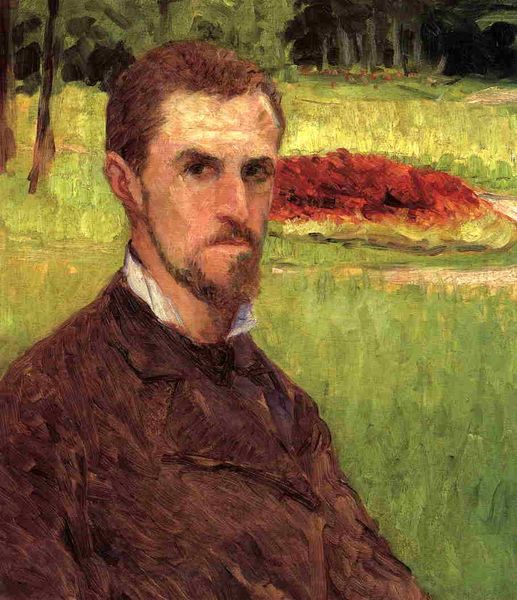
Dimensions: 40.5 x 32.5 cm
Copyright: Public domain
Editor: Here we have Gustave Caillebotte’s Self-Portrait from 1892, rendered in oil paint. There's something quite arresting about the way he's captured his own gaze. What strikes you about this work? Curator: For me, the most compelling aspect is the materiality itself. Notice the brushwork. It’s not just representational; it's almost sculptural. Consider the labor involved, the sheer physicality of applying the paint. Think about Caillebotte, wealthy enough to dedicate time to art but consciously choosing to engage with this strenuous process. Editor: I see what you mean about the physical application. But how does his wealth intersect with the image? Curator: Well, it’s a question of privilege and choice. He's not toiling under economic pressures like many other artists; his engagement with the "work" of art-making becomes a deliberate, almost intellectual act. It makes you wonder what kind of statement he wanted to achieve. Editor: I suppose, knowing he had financial freedom, this self-portrait almost feels like a display of commitment to the craft and materials. Was that unusual at the time? Curator: It's more nuanced than just a commitment display. It places him within a lineage of artists engaging with modern life, yes. But he isn’t just observing modernity. The rough texture, that heavy application of paint—these things become signs of individual artistic labor, a specific identity constructed through a particular way of handling materials. Look closely, can you feel the texture? Editor: Now that I consider that aspect, I recognize that the portrait seems much more intimate, perhaps an introspective study through process and raw medium. Thanks, that gave me a new way to observe Caillebotte's artwork. Curator: Precisely. It highlights how materiality and technique were as crucial to conveying a personal message.
Comments
No comments
Be the first to comment and join the conversation on the ultimate creative platform.
